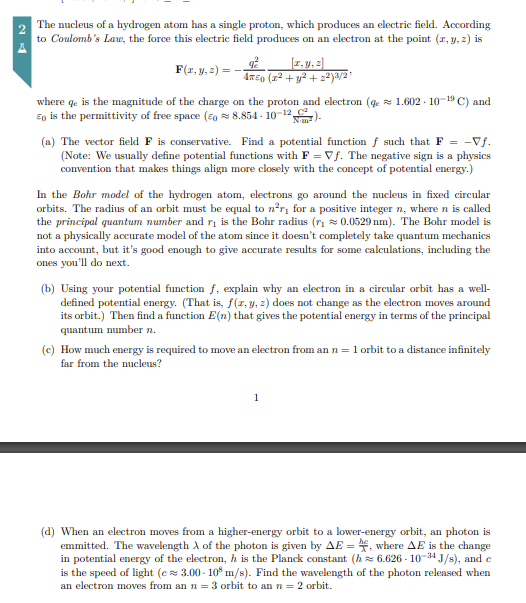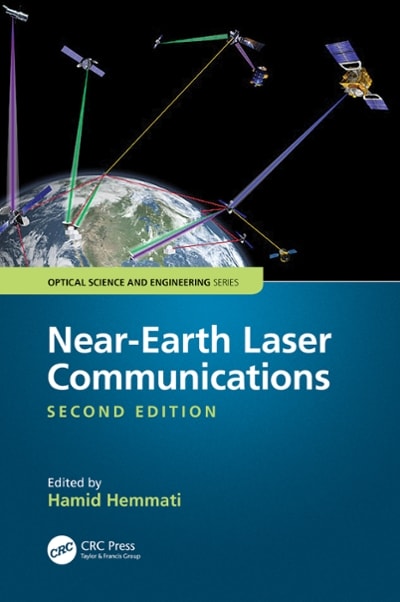Question
The nucleus of a hydrogen atom has a single proton, which produces an electric field. According to Coulomb's Law, the force this electric field produces
The nucleus of a hydrogen atom has a single proton, which produces an electric field. According to Coulomb's Law, the force this electric field produces on an electron at the point (x, y, z) is F(x, y, z) = ?q^ 2e/(4??0) x [x, y, z]/(x^2+y^2+z^2)^(3/2) , where qe is the magnitude of the charge on the proton and electron (qe ? 1.602 10^?19 C) and ?0 is the permittivity of free space (?0 ? 8.854 10^?12 C^2/Nm^2 ). (a) The vector field F is conservative. Find a potential function f such that F = ??f. (Note: We usually define potential functions with F = ?f. The negative sign is a physics convention that makes things align more closely with the concept of potential energy.)
In the Bohr model of the hydrogen atom, electrons go around the nucleus in fixed circular orbits. The radius of an orbit must be equal to n^2r1 for a positive integer n, where n is called the principal quantum number and r1 is the Bohr radius (r1 ? 0.0529 nm). The Bohr model is not a physically accurate model of the atom since it doesn't completely take quantum mechanics into account, but it's good enough to give accurate results for some calculations, including the ones you'll do next.
(b) Using your potential function f, explain why an electron in a circular orbit has a welldefined potential energy. (That is, f(x, y, z) does not change as the electron moves around its orbit.) Then find a function E(n) that gives the potential energy in terms of the principal quantum number n.
(c) How much energy is required to move an electron from an n = 1 orbit to a distance infinitely far from the nucleus?
(d) When an electron moves from a higher-energy orbit to a lower-energy orbit, an photon is emmitted. The wavelength ? of the photon is given by ?E = hc/? , where ?E is the change in potential energy of the electron, h is the Planck constant (h ? 6.626 10^?34 J/s), and c is the speed of light (c ? 3.00 10^8 m/s). Find the wavelength of the photon released when an electron moves from an n = 3 orbit to an n = 2 orbit.

Step by Step Solution
There are 3 Steps involved in it
Step: 1

Get Instant Access to Expert-Tailored Solutions
See step-by-step solutions with expert insights and AI powered tools for academic success
Step: 2

Step: 3

Ace Your Homework with AI
Get the answers you need in no time with our AI-driven, step-by-step assistance
Get Started


